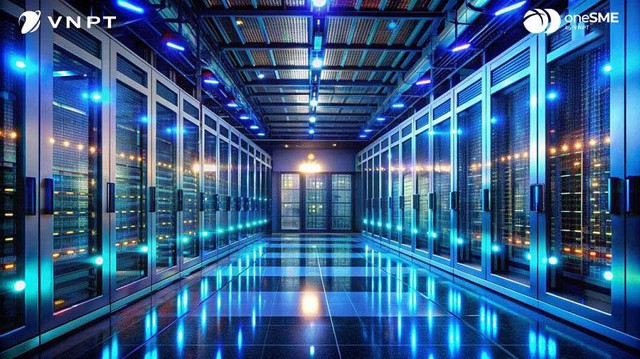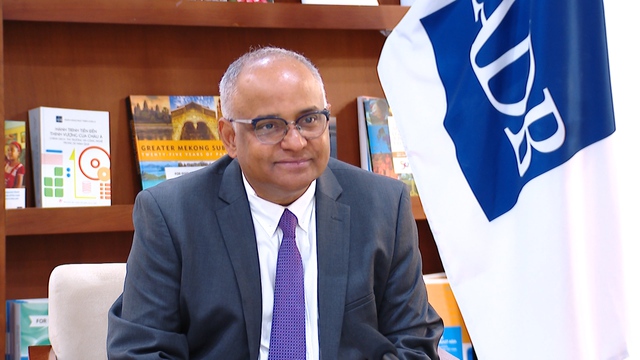FDI in Hanoi lifts city to new highs
With its great economic and geographic potential, Hanoi has increasingly become more critical to the investment strategy of foreign investors, many of whom are planning large-scale operations in the city. Ha Tung reports.
 |
| Hanoi has attracted the second-highest number of FDI projects in Vietnam |
Shigenobu Nagamori, chairman and CEO of Japan’s industrial group Nidec, recently announced that his firm is planning to build factories in Hanoi in mid-2018.
The factories will lay a firm groundwork for Nidec to turn Vietnam into an export hub like China and Thailand. It is expected that Nidec will invest about $500 million into Vietnam by 2022.
After becoming operational, the factories will have a monthly capacity of 10 million electric motors, used for air conditioners and home appliances, and 100,000 reducers for use in robotics. Nidec also aims to triple its sales in Vietnam to about $2.72 billion.
Meanwhile, in Tokyo in early June, another Japanese firm, Aeon, officially received an investment certificate for its second commercial centre in Hanoi, after its first shopping mall in Long Bien district opened in November 2015.
The new centre, worth $200 million, will be built in Hanoi’s Ha Dong district, on roughly 200,000 square metres of land. It will be Aeon’s fourth mega-mall project in Vietnam.
Aeon will co-operate with locally-owned BIM Group to complete the project, which is slated to begin this year and see completion by late 2019. Upon completion, it will be one of the biggest commercial centres in Vietnam.
This Aeon project is one of the most significant projects that will contribute to helping the city reach its goal of attracting $3.5 billion worth of foreign direct investment (FDI) this year, up from $3.12 billion last year.
More robust FDI flow anticipated
FDI flow into Hanoi came to a halt at one point a decade ago. That was because, according to city leaders, after Ha Tay province was merged with Hanoi in 2008, time was needed for the city to consider and approve planning schemes.
The situation has changed now. Last year, the city lured $3.12 billion in FDI volume, up 2.9-fold compared to 2015, and 2.2 times more than the projection. It came second behind Ho Chi Minh City, which attracted $3.42 billion.
In the first six months of this year, the city attracted $1.1 billion. The figure is expected to increase sharply in the coming time, as a number of large-scale FDI projects now await investment certificates.
According to the Hanoi Department of Planning and Investment’s Foreign Economic Relations, a string of foreign investors have been working with the city’s authorities on their projects.
These projects include the $200 million Ta Thanh Oai waste treatment plant; a $95.1 million project to build bus stops; a $1 billion project to build an eco-urban area in Quoc Oai district, proposed by South Korea’s Lotte Group; and a $6 billion project to build the city’s Lang-Hoa Lac satellite urban area.
In addition, Hanoi authorities said the city is scaling up efforts to improve the local investment climate, making it more appealing to domestic and foreign investors.
A raft of measures have been mentioned, such as smoothing land access and land fund use, enlarging space for investment and business activities, improving management efficiency, accelerating administrative reforms, and boosting investment promotion efficiency.
Significantly, Prime Minister Nguyen Xuan Phuc has just enacted a decree allowing the application of a specific investment incentive regime at the city’s Hoa Lac Hi-Tech Park.
Investment projects based in the park will receive the highest regulated investment incentives. The park is also encouraged to apply a “one-stop shop” mechanism in tackling investment procedures and giving priority to land fund allocation for building worker housing blocks.
After nearly two decades at a development standstill, Hoa Lac Hi-Tech Park is now seeing opportunities to accelerate investment. This also provides a good chance for the city to attract investment into high-tech fields or investment from multinationals, a priority investment orientation set by Hanoi for many years now.
In addition to prioritising high-tech projects and investment projects from multinationals, the city also stimulates investment into projects involving supporting industry development, biotechnology, environmentally-friendly technologies, information technology, agricultural development, safe food, and large-scale infrastructure.
Attracting investment into these projects also means the city will target facilitating investments under the public-private partnership (PPP) model. In the first half of this year, Hanoi attracted 24 projects in the PPP format, valued at more than VND32 trillion ($1.45 billion), which is a shift expected to create strong waves of investment into the city in the coming time.
The city will also focus on attracting FDI from many foreign sources, especially high-tech projects from Japanese, South Korean, Singaporean, Australian, American, and European investors.
An FDI magnet
According to the Ministry of Planning and Investment, as of May 20, Hanoi has attracted 4,157 valid FDI projects registered at almost $26.3 billion, making the city the fourth-largest investment destination in the country, after Ho Chi Minh City ($44.56 billion), Binh Duong province ($28.5 billion), and Ba Ria-Vung Tau province ($27.25 billion). Hanoi has also been Vietnam’s second-largest awardee in terms of number of FDI projects, second only to Ho Chi Minh City (at 6,954).
Foreign direct investment flow into Hanoi is shifting into the service field, matching the development trend of one of the country’s growth engines.
Hanoi attracted an influx of FDI into this field through a string of projects last year. The projects of Japanese retail giant Aeon Group in Hanoi’s Long Bien and Ha Dong districts are typical examples. Other projects include a $210 million computerised lottery project called Vietlott, a $208 million capital injection for local mobile network operator Vietnamobile, and a $134 million project of Vietnam Public Bank.
According to the Korea Chamber of Commerce in Vietnam (KorCham), Hanoi is a good location for Korean investors in commercial centres and property projects.
“Some investors are working with the city’s authorities on big projects to build commercial centres in Hanoi,” a KorCham representative told VIR. He added that specifics were unavailable at the time due to competition-related reasons.
Lotte Group is expected to invest at least $300 million in building and operating the Ciputra Hanoi Mall in Hanoi, after it purchased the project from locally-owned Nam Thang Long Urban Development. The 200,000sq.m development is located in the $2 billion Ciputra Hanoi property project.
In another case, the $420 million multi-functional entertainment complex and horse racing track in Soc Son district is expected to be implemented by a joint venture between Hanoi Tourism Corporation and South Korea’s Global Consultant Network Co., Ltd.
The city’s success in securing a $300 million research and development project from South Korean tech giant Samsung Group is also notable, as a sign that bigger things are coming to this political, economic, and intellectual centre.
Earlier this year Coca-Cola Vietnam increased the investment capital on its Hanoi plant by $319.8 million, raising the total registered capital to $580.9 million. Coca-Cola Vietnam will increase its production scale and annual capacity to 790 million litres by 2024 and 1.2 billion litres by 2030. The company began its investment in Hanoi in 1994, with its first project launched in Thuong Tin district.
Why Hanoi?
According to surveyed firms, there are many reasons why Hanoi is becoming a hotspot for investors.
The city has developed a synchronous infrastructure network, industrial parks, and export processing zones, and Noi Bai International Airport is just 20 kilometres from the city centre. Meanwhile, the northern ports of Haiphong and Cai Lan, which handle nearly 50 per cent of Vietnam’s cargo transportation, are only 120 kilometres from Hanoi, which is the transport hub of the north with a cohesive system of railways, waterways, and roads.
Beside its young workforce, Hanoi boasts hundreds of institutes for scientific research, and over 50 universities and colleges, which are capable of accrediting 800,000 graduates annually.
In addition, government headquarters, diplomatic missions, and international organisations such as the United Nations and the EU are all located in Hanoi, providing investors with a sound communications network for information and experience sharing.
Administrative reform has also been a major focus in Hanoi, with regards to the promotion, management, and implementation of FDI projects. The “one-stop shop” mechanism is evidence of the commitment city agencies have in regard to creating a clear and transparent environment for investment.
source: vir.com.vn
More Articles
- • Special policies for Hoa Lac Hi-tech Park
- • Survey: VN ranks 3rd in ASEAN on global innovation index
- • VN, Japan issue joint statement on deepening partnership
- • VN, Japan sign deals worth US$22bln
- • VN-Japan trade value up 16% in four months
- • Vietnam introduces IT products at tech in Asia
- • VN's FDI inflow hits $4.8 bln in first 4 months of 2017
- • PM to chat with business community
- • PM asks for better preparation for Industry 4.0
- • FDI attraction up 40.5% in four months


